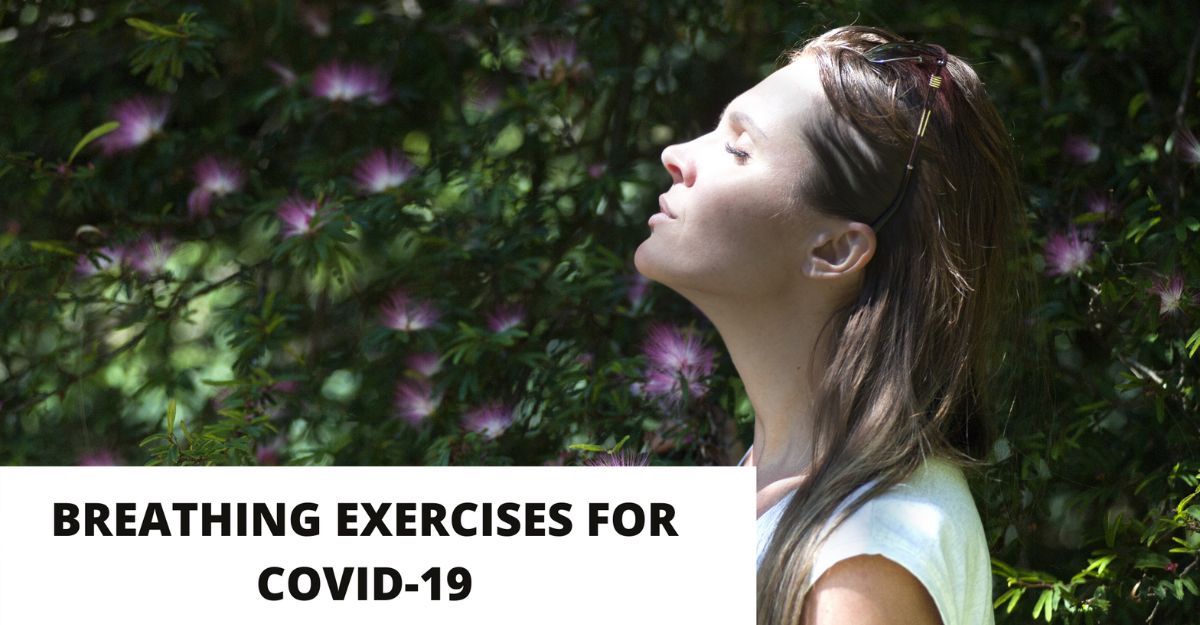

Once a person contracts COVID-19, it may attack the lungs and respiratory system, sometimes leading to serious damage. COVID-19 frequently leads to pneumonia and even acute respiratory distress syndrome (ARDS), a serious lung injury. Restoration of lung function is possible but may require therapy and regular exercise months after the treatment of the infection.
The initial step towards recovery is by focusing on breathing. Here are a few breathing exercises that are known to help in the speedier recovery of people who have contracted COVID-19.
How can breathing exercises help people with COVID-19?
Covid-19 affects different people in different ways. The common symptoms that make breathing difficult are inflammation in the lungs and airways.
People who are very sick as a result of this viral infection may suffer from pneumonia as a result. This causes the lungs to be filled with fluid and mucous, making it difficult to breathe and get requisite oxygen that the body needs to function properly.
If the person has a condition such as chronic obstructive pulmonary disease (COPD) or moderate to severe asthma, they may already have reduced lung capacity and difficulty in breathing and COVID-19 can seriously aggravate this further.
These conditions result in chronic inflammation of the lungs, which can worsen significantly in people who develop COVID-19 after contracting SARS-CoV-2 virus.
The entire respiratory tract is affected by COVID-19, further blocking the airflow. Asthma attacks can be triggered by it and lead to acute respiratory distress syndrome (ARDS). People with these conditions can benefit greatly from deep breathing exercises that clear the lungs and strengthen lung function.
Deep breathing can help in other ways as well, including:
Can SARS-CoV2 infection be prevented by breathing techniques?
COVID-19 cannot be prevented by breathing techniques and should not be used as a preventive measure instead of proven methods such as wearing a mask, social distancing, or vaccination.
Breathing exercises, however, can help strengthen the lungs, which may reduce the effect of COVID-19 on the respiratory system.
The following techniques reduce shortness of breath and improve lung ventilation.
Pursed lip breathing
Pursed lip breathing brings more oxygen into the lungs than regular breathing. It also keeps the airways open for a long time by decreasing the number of breaths the person takes per minute.
The steps mentioned below have to be followed to practice pursed-lip breathing:
Aerobic Exercise
Any type of exercise that has the potential to make the person breathe faster as compared to not exercising, is considered a breathing exercise.
These include:
Regular exercise supports lung health. Healthy lungs can be the best defence against COVID-19 if the person contracts coronavirus that causes symptomatic viral infection.
What are the best breathing exercises for an acute case of COVID-19?
COVID-19 is a respiratory disease caused by coronavirus.
The most common symptoms of COVID-19 include:
Or the person may have one of the following symptoms or conditions:
In people with severe COVID, symptoms usually begin between two and fourteen days after exposure and resolve within two weeks. Some people have chronic symptoms, such as shortness of breath and fatigue for a long period of time after recovering from COVID-19.
If the person has COVID-19, they must talk to a doctor before they start breathing exercises. If they have shortness of breath when they rest, irregular heartbeat, or chest pain, exercising can exacerbate their symptoms.
In addition to pursed-lip breathing, some other breathing exercises can be helpful while recovering from COVID-19. They are :
Proning
Moderate or mild COVID cases can, for instance, be managed well by adopting the proning technique and using machines like oxygen cylinders or concentrators, especially at a time when securing hospital access is quite difficult.
Lying face down and breathing is called proning. As per the Ministry of Health and Family Welfare in India, proning is a medically accepted position to improve oxygenation and comfort. If the normal oxygen level in human body drops below 94, an infected individual at home isolation can lie on their belly as the position improves ventilation, keeps the alveolar units open.
Diaphragmatic breathing
What are the best breathing exercises if the person has long-lasting COVID?
If the person is living with long-haul COVID-19, they may continue to suffer from symptoms for weeks or months after the viral infection. The symptoms vary but may include:
Breathing exercises can help improve long COVID symptoms. They may also help to reduce the ongoing stress and anxiety caused by the symptoms of COVID-19.
The techniques for people with long-haul COVID are the following:
Yawn to a smile
The muscles in the chest are opened by performing this breathing exercise, allowing the diaphragm to expand fully. It also strengthens the arms and the muscles of the shoulder.
It must be done in the following manner:
Humming while exhaling
Humming, similar to the chant “om” in yoga, can aid in pulling oxygen into the lungs with each breath. Many people also find that it can also be very calming.
The following steps must be followed to perform this exercise:
Conclusion
Most people who have contracted and developed COVID-19 experience a full recovery, usually within a few weeks. Serious cases of infection can take a month or more to resolve completely.
Rebuilding the lung capacity can help the person recover, irrespective of complications such as pneumonia or whether they were put on a ventilator.
Each breath is deepened by deep breathing thus improving the exchange of oxygen and carbon dioxide in the lungs. The efficiency of the lungs can be improved by this.
The person can feel a sense of calm through deep breathing. This can aid in faster and a more holistic recovery. If the person is using breathing exercises to strengthen their recovery process, they must not rush things and should start slowly and build up to multiple repetitions and longer durations of exercising.